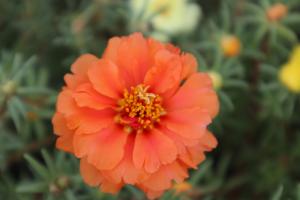Introduction
Flowers are an essential part of plants, and many individuals appreciate them for their beauty and attractive colors. But what does a flower do for the plant itself? Flowers have many important functions, both for the plant's reproduction and the larger ecosystem. In this article, we will explore the various roles and functions of flowers in plants.
Pollination
One of the primary functions of flowers is to facilitate pollination, which is the transfer of pollen from the male part of a flower to the female part of another flower. Bees, butterflies, and other insects and animals are crucial for pollination. These organisms are attracted to the flowers' colors, fragrances, and nectar, which ultimately leads them to transfer the pollen from flower to flower. Without pollination, plants cannot produce seed, and their genetic diversity and survival might be threatened.
Reproduction
Another essential function of flowers is in reproduction. Flowers contain both male and female reproductive structures, which are vital for sexual reproduction. The male part of a flower produces pollen, which contains the plant's sperm cells. The female part of a flower contains the egg cells. When pollen lands on the stigma, the pollen tube grows down the style to fertilize the egg cells. As a result, the ovule matures into a seed, and the flower eventually turns into a fruit. This process is necessary for plants to reproduce and continue their lineage.
Adaptation
Flowers' colors and shapes can serve several adaptation functions. Some flowers may have a particular color or shape to attract specific pollinators, such as honeybees or hummingbirds. Specific patterns or colors in a flower may help to distinguish it from other flowers so that pollinators can easily identify them. Flowers may also use their shapes to deter certain animals or insects from eating them, for example, some flowers have narrow tubes that only certain insects with long mouthparts can reach the nectar. In this way, flowers can adapt to their surroundings and ensure their survival.
Conclusion
In conclusion, the flower of a plant has many crucial roles and functions in its life cycle. From pollination and reproduction to adaptation and survival, flowers are essential for the plant and the ecosystem they are a part of. The beauty and colors of a flower are not just for human appreciation but also for crucial natural processes, making them a vital part of the living world.

 how many times do yo...
how many times do yo... how many planted tre...
how many planted tre... how many pine trees ...
how many pine trees ... how many pecan trees...
how many pecan trees... how many plants comp...
how many plants comp... how many plants can ...
how many plants can ... how many plants and ...
how many plants and ... how many pepper plan...
how many pepper plan...






























